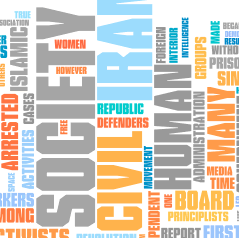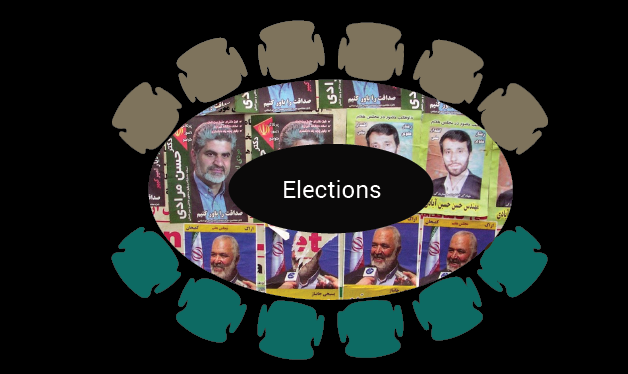
Attack on Civil Society in Iran: Introduction
May 26, 2010Sealing of ICTRC Offices In Tehran by the Islamic Revolutionary Court
June 1, 2010Under Khatami, civil society was given the space it needed to develop. Many independent civil society organizations were formed as were many with a high degree of dependence on the state.
- Civil society grows during the Khatami administration
- Limits stretched and tested
- Transnational cooperation
- Contribution of Internet
- Increase in the number of rights organizations
Under the presidency of Mohammad Khatami (1997-2005), independent forms of civil society expanded. The growth in NGOs began prior to his presidency, but it was tolerated and given space to develop during his term in office. By the end of his term, official statistics reported 6914 registered NGOs in Iran. In a 2007 SWOT analysis of civil society in Iran, the director of ICRTC, Sohrab Razzaghi, wrote:
During the past two decades and after the Iran-Iraq war, easing revolutionary emotions, eclipse of populism, inclination to a non-ideological society and dominance of development discourse, and concurrent with the world’s developments and the third wave of democracy, Iran witnessed the re-re-mergence of the civil society which was rather slow and weak during its first few years, but took momentum by the outcome of the 1997 presidential election that was the beginning of an era of political liberalization.
Civil society was not new to Iran, but had been restricted since the revolution. When space was provided for individuals to come together for collective actions that contributed to society many civil society organizations were ready to step in. New, independent newspapers were opened and Iranian cinema contributed to a vibrant and developing culture. The limits were stretched and tested during the eight years of reform, but restrictions on free expression and association remained. Newspapers were forced to close, but as each closed, another opened. New papers were often staffed by the same reporters and editors under a new name. Filmmakers were still censored, but they pushed back and created films that pleased the public and made it by the censors.
It is important to note that civil society was diverse in Iran under the Khatami administration. Civil society organizations included the Association of Iranian Journalists, Association of Employers, human rights organizations, environmental groups that used the precepts of Islam to lobby for better protections, runaway and addict services, education initiatives, arts organizations, mine clearance efforts, and groups addressing HIV/AIDS. In addition, the administration worked with the UNDP to build capacity among civil society organizations.
A new development in civil society began in 2003 after the devastating earthquake in historic Bam. For the first time since the revolution, activists and individuals living in diaspora began to accept that independent civil society did indeed exist in Iran. Prior to the earthquake, there was mistrust and even open hostility on the part of diaspora groups towards activists inside Iran, but the earthquake led to cooperation between domestic and international organizations.
The Internet contributed to the ability of transnational groups to form, showcasing a new virtual and supranational facet to domestic civil society, bringing to Iran’s fledgling civil society more access to funds and expertise, better reporting on human rights, and increased interactions with international civil society actors. (Halleh Ghorashi and Kees Boersma. “The ‘Iranian Diaspora’ and the New Media: From Political Action to Humanitarian Help.” Development and Change 40, no 4) : 667—691 (2009). © Institute of Social Studies 2009.)
In addition, during the Khatami administration, there was a corresponding growth in domestic human rights-related organizations (including Human Rights Reporters, The Council to Defend the Right to Education, and Human Rights Organization of Kurdistan), which contributed more reliable reporting of human rights abuses in Iran. Independent groups continued to advocate for the rights of minors (as defined by international norms, rather than by Sharia law) and made strides to address the alarming rate of child executions. Women’s groups began exercising more power and the Million Signature Campaign began to build grassroots support for equal rights.
After the election of Ahmadinejad, civil society organizations came under pressure. (See Progress Report: The First Round of Representation of the Community-based Organizations at the Central Supervisory Board for the official account of post-Ahmadinejad civil society activities.) Many organizations, such as ICRTC (see Sealing of ICTRC Offices In Tehran by the Islamic Revolutionary Court ICTRC), Rahi (the organization of Shadi Sadr), NGOTC (NGO training center) were closed. Others were forced to shut down, some were forced to limit activities, and still others have attempted to adjust their activities to the new reality in Iran. Razzaghi reports that since Ahmadinejad’s 2005 election, the State has been working to replace independent civil society with its own “paper” version.





